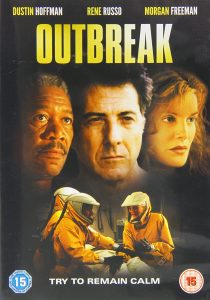Module 5: Management and Prevention of Disease Outbreaks
Estimated Reading Time: 5.5 hrs
What was Dr. Wright’s response?
Remember the discovery of many dogs with respiratory infection at Gatorland Animal Services the day before the “Clear the Shelter” fee-waived adoption event? Of the 65 dogs in the shelter, 13 (20%) had clear or mucopurulent nasal discharge and coughing. With this number of dogs affected in a short time, Dr. Wright knew the infection was contagious and more dogs likely would become sick. Fearing a disease outbreak, she decided to cancel the adoption event.
What do you think? Could this be the warning sign of an impending disease outbreak? What are Dr. Wright’s next steps?
Read these media reports on how three shelters handled their disease outbreak.
Do you know any shelters that responded to a disease outbreak by depopulation? Is depopulation the best option for stopping a disease outbreak in a shelter? Read the ASV’s position statement about depopulation as a response to disease outbreaks ASV Depopulation position statement
Draconian responses to disease outbreaks such as depopulation have become increasingly unacceptable. Are there life-saving alternatives for managing disease outbreaks to avoid resorting to mass euthanasia for stopping disease transmission?
In this module, we review the basic steps of life-saving strategies for managing and resolving disease outbreaks, including diagnosis, isolation, quarantine, establishing a clean break, biosecurity practices, environmental decontamination, documentation, and communicating with staff and community stakeholders.
To start, review the Outbreak Response section in Chapter 6 of the ASV Guidelines.
ASV Guidelines Response to Disease Outbreaks
- Depopulation is defined as euthanasia of an entire population or subpopulation, including healthy and unhealthy animals. It is not an appropriate initial response to disease outbreaks and typically does not resolve the underlying causes.
- A disease response plan includes measures to minimize transmission to unaffected animals or people and ensures appropriate care of the affected animal.
- During an outbreak, physical separation must be established between exposed, at-risk and unexposed animals or groups of animals.
- All facilities should have a means of providing isolation that will allow for humane care and not put other animals at risk. Isolation may be accomplished physically on-site or through transfer to an appropriate facility.
- In some circumstances, it may be necessary to stop animal movement, including intake or adoptions, in order to prevent disease spread.
- Diagnosis or identification of specific pathogens should be sought. Initially, a clinical or working diagnosis determined by a veterinarian may provide the basis for treatment and response.
- During an outbreak, all at-risk animals should be monitored for signs of disease at least once a day.
- In response to an outbreak, protocols (vaccination, sanitation, movement, etc.) should be reviewed to ensure that measures are effective shelter-wide against the pathogens of concern.
- Shelters should avoid returning recovered or exposed animals to the general population when there is significant risk they may transmit disease to other animals.
What defines a disease outbreak?
 How do you know when the disease incidence is just the normal background level of endemic disease or something extraordinary? How do you know when you have reached the threshold for an “outbreak”? Definitions of “outbreak” include a sudden increase in the incidence of a disease among individuals with a common exposure source.
How do you know when the disease incidence is just the normal background level of endemic disease or something extraordinary? How do you know when you have reached the threshold for an “outbreak”? Definitions of “outbreak” include a sudden increase in the incidence of a disease among individuals with a common exposure source.
Some diseases are so unusual, severe, or hard to contain that 2 cases may constitute an outbreak, such as the avian influenza outbreak in shelter cats in New York City in 2016. Commonly occurring diseases such as CPV, CIRD, and feline URI require many more cases above the baseline to trigger recognition and response as an outbreak. Here are some criteria that signify shelter-wide transmission or a disease outbreak:
- Higher than expected number of cases
- Evidence of in-shelter transmission with new cases occurring on a frequent basis
- Failure of the usual containment protocols
Disease outbreak impacts
Management of contagious infectious diseases in dogs and cats continues to be one of the biggest challenges facing shelters. Every shelter is at risk for a disease outbreak. Disease outbreaks not only impact the life-saving capacity of shelters, but also harm the shelter’s reputation with adoption partners, local veterinarians, and the entire community, especially when such outbreaks are publicized by local and national media sources. This contributes to paralyzed adoptions, low staff morale, and perpetuation of the vicious cycle of crowding. In addition to the tangible losses associated with the financial costs of a disease outbreak, there are the intangible but far more costly losses of life and community support.
Disease Outbreak Impacts Summary
- Euthanasia of adoptable animals
- Adoption paralysis
- Financial costs
- Resource reallocation (staff, space, money)
- Low staff morale
- Damaged reputation with adoption partners, local veterinarians, and entire community
- Overall impact: decreased life-saving capacity

